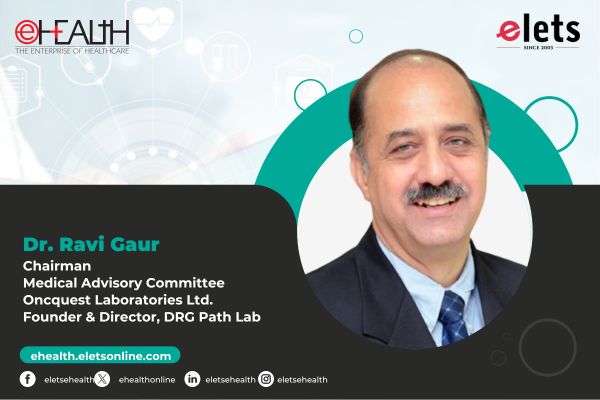
The trajectory of India’s healthcare industry, from hospitals and pharma to medtech and digital health, is deeply intertwined with the direction of public policy. Whether it’s equitable access to treatment, the pace of innovation, or infrastructure development, the success of India’s healthcare journey hinges on collaboration between government and private stakeholders.
If India is to realise its potential of becoming not just the Pharmacy of the World, but also the Innovation Capital of Global Healthcare, policy must play the role of an active enabler, not just a regulator.

Ayushman Bharat Digital Mission: India’s Healthcare Backbone in the Making
One of the boldest steps in this direction is the Ayushman Bharat Digital Mission (ABDM). By providing every citizen with a unique digital Health ID, India is building more than just a health database, it is laying the foundation for a national health backbone. ABDM has the potential to revolutionise access, especially for India’s 37% urban migrant population, by allowing medical records to move seamlessly with patients across geographies. It could enable real-time detection of outbreaks, improve monitoring of mass health campaigns, and foster truly personalised care.

However, to realise this vision, the system must be backed by strong interoperability standards, ironclad data privacy norms, and a policy environment that encourages private sector participation. Without these, ABDM risks becoming another underutilised initiative rather than a transformative national platform.

Public-Private Partnerships: The Bridge to Bharat
While technology will be central to India’s healthcare evolution, bridging the urban-rural healthcare divide remains the most pressing challenge. Today, over 65% of hospital beds are located in urban areas, while more than 60% of India’s population lives in rural regions. The solution lies in Public-Private Partnerships (PPP).

The government can provide land and foundational support, while private players bring operational efficiency, technology, and innovation. Encouraging PPP models in Tier II and III cities can expand access without overwhelming public systems, while simultaneously generating employment and stimulating local economies. This synergy between policy and enterprise could redefine the healthcare landscape in rural India.
Pharma Reforms: Creating a Dual Engine of Growth and Access
India’s pharmaceutical industry, valued at around US$58 billion, is projected to reach US$120–130 billion by 2030 and US$400–450 billion by 2047. It is a global heavyweight. Yet, historically, 80% of our Active Pharmaceutical Ingredients (APIs) were imported from China—a dangerous dependency.
The Production Linked Incentive (PLI) scheme for the pharmaceutical sector is a bold attempt to reclaim India’s position as a manufacturing powerhouse for critical APIs and high-value drugs. Yet, despite its promise, many manufacturers remain wary, held back by concerns over stringent price caps that threaten revenue viability and the absence of long-term policy clarity.
For this vision to truly materialise, the government and industry must come together to forge a sustainable, forward-looking roadmap, one that respects the need for affordability without stifling innovation or profitability. Only then can India not just meet its domestic healthcare demands but also emerge as a dominant force in the global pharmaceutical supply chain.
IPR and Regulatory Reform: Unleashing Indian Innovation
To move from generic manufacturing to global innovation, regulatory and intellectual property reforms must become priority areas. Streamlined IPR policies, faster patent clearances, and alignment with global regulators like the USFDA and EMA will not only empower Indian innovators but also bolster international credibility.
A modernised regulatory system can unlock India’s potential to lead in medtech, diagnostics, and biotech, the areas where the next wave of healthcare breakthroughs will emerge.
Yet, as India walks the tightrope between affordability and innovation, certain policies need recalibration. Blanket drug price restrictions, while designed to protect consumers, often deter investment in R&D and discourage the introduction of advanced therapies. Smaller players struggle to survive on razor-thin margins, and patients miss out on global innovations.
At the same time, initiatives like Jan Aushadhi Kendras are boosting access to generics, but they must be underpinned by stringent quality checks. India’s reputation in global markets hinges on the safety and efficacy of its generics. Diluting quality in the name of affordability would be a costly mistake.
If India is to truly transform from the Pharmacy of the World to the Innovator of the World, it must rethink how it nurtures talent and research. Deep collaboration between academia, industry, and government is vital to developing next-gen healthcare solutions. But that’s only one side of the coin. The other is retention. India continues to lose top medical and research talent to better opportunities abroad. Reversing this brain drain demands stronger domestic incentives, research infrastructure, and global-scale career prospects.
However, policy must also confront the persistent bottlenecks stalling progress. Rural India continues to suffer from a severe shortage of skilled healthcare professionals. Resistance from legacy institutions hampers regulatory reform. Most worryingly, health insurance penetration remains dangerously low, just 37%, according to IRDAI’s 2023 data, forcing more than 60% of the population to pay out-of-pocket for medical care. These are not minor challenges; they are structural issues that require urgent and sustained attention.
Also Read :- Evolution of the Medical Aesthetics and Cosmeceuticals Industry
The Way Forward: Recommendations
The way forward is clear: a multi-pronged, innovation-driven strategy rooted in real-world needs and future-ready governance. We must promote academic-industry collaboration through grants, fellowships, and incubators. Healthcare education and skilling, especially for nurses and paramedics in rural India, must be prioritised. Digital literacy must be strengthened to unlock the full benefits of initiatives like ABDM. And above all, policies must be agile, evolving continuously through real-time data and feedback loops to meet the needs of a changing population.
India’s healthcare future cannot rest on the shoulders of policymakers alone. It must be a shared mission, where government, private players, startups, global regulators, and civil society co-create a system that is accessible, affordable, and aspirational. With the right policy scaffolding, India doesn’t just have the potential to lead in global healthcare, it has the responsibility.
Views expressed by: Mahesh Makhija, Chairman and Managing Director, QMS MAS Ltd.
Be a part of Elets Collaborative Initiatives. Join Us for Upcoming Events and explore business opportunities. Like us on Facebook , connect with us on LinkedIn and follow us on Twitter , Instagram.
"Exciting news! Elets technomedia is now on WhatsApp Channels Subscribe today by clicking the link and stay updated with the latest insights!" Click here!
















